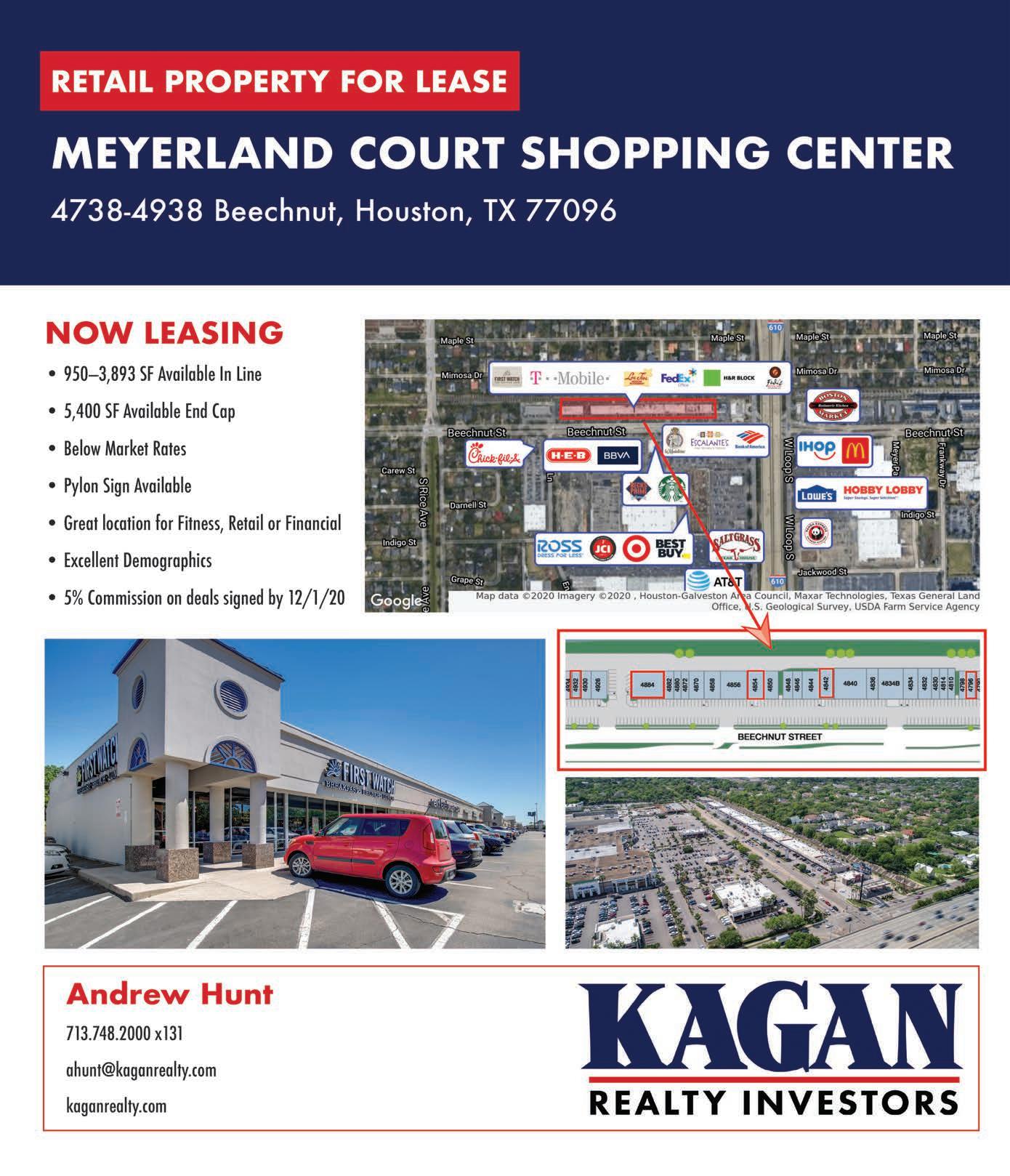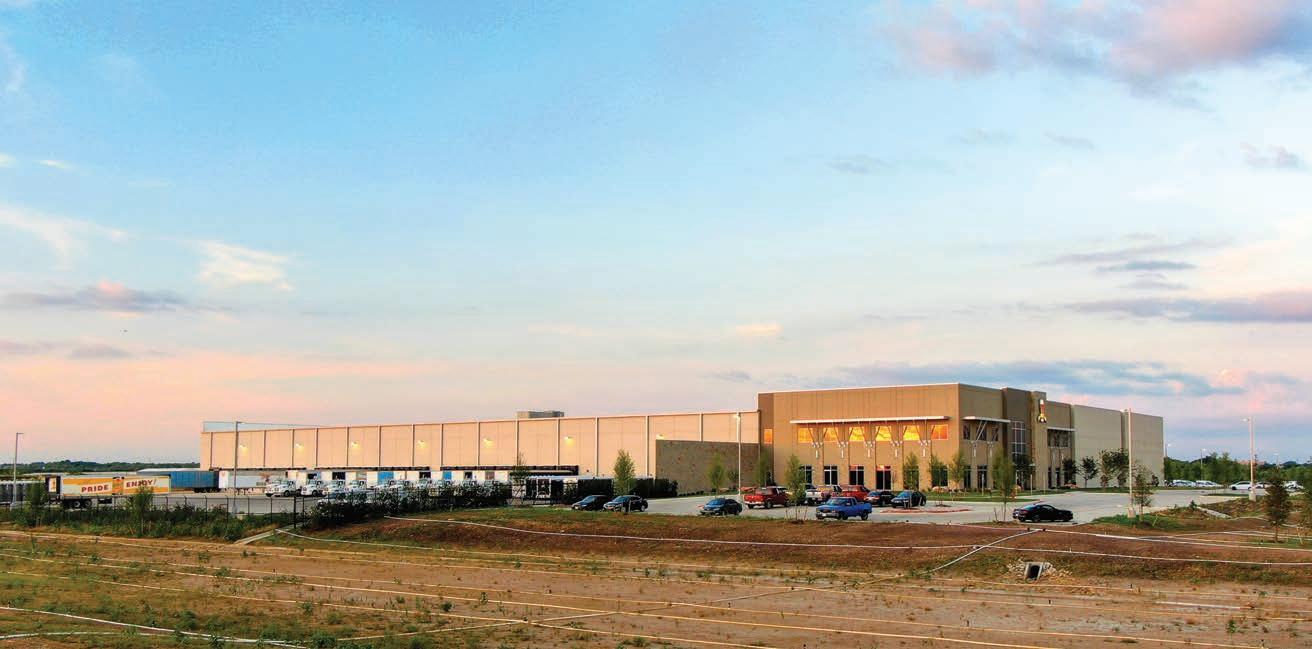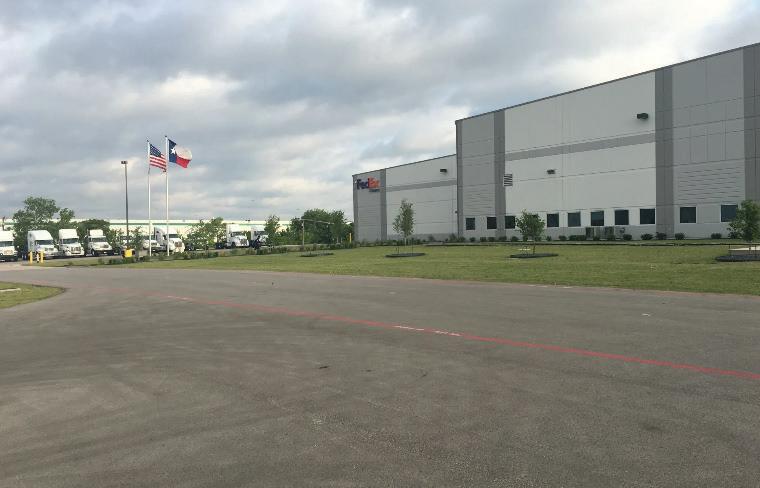
8 minute read
REDnews’ DFW Industrial Summit Several commercial real estate experts sounded off on what to
BY RAY HANKAMER
Emerging Trends in Logistics and Commercial Real Estate Panelists: Alfredo Gutierrez, Sparrowhawk; Barret Bufkin, ESRP; Conrad Madsen, CBRE • As multifamily, retail and office “feel the pain,” industrial is holding up well, and accelerating, as e-commerce continues expansion; investors are transferring their attention to industrial from these other sectors • Companies are bringing back manufacturing from Asia to U.S. and to Mexico, which is much closer to DFW; companies are coming here from California; labor costs in Mexico now approximate those in China, as China’s economy has strengthened “DFW is strategically located in the middle of the country, is in the central time zone, is one day’s drive from Mexico and Port of Houston, and it is “the” hottest industrial market in the country, and some say “the world;” DFW has a super freeway network and good general accessibility” manufacturers are seeing stress time zone, is one day’s drive from Mexico and Port of Houston, and it is “the” hottest industrial market in the country, and some say “the world;” DFW has a super freeway network and good general accessibility Manufacturers wanting to “near-shore” from China to Mexico are hampered from difficulty of business travel to MX during COVID After a pause with the onset of COVID, investment deals are do-able and cap rates are back to where they were at the start of the year Loans are available at an average of 60 percent LTV, with lenders requiring ample debt service coverage—however, low leverage requires more expensive equity and mezzanine money Construction costs are escalating, driven far more by rising land prices
Distribution and heavy manufacturers seem strong, but some light DFW is strategically located in the middle of the country, is in the central than rising material and construction labor costs DFW Airport is most sought-after sub-market in the Metroplex, but land is in shorter supply, requiring “farther out” sites, which creates need for extending infrastructure; also tenants don’t like to expand to sites too far out because their labor force often rebels against longer commutes The “Amazon effect” is driving expansion of distribution warehouse construction to be close to population density for “last mile” deliveries E-commerce has expanded from 11 percent before COVID to 16 percent and continues to grow; now WalMart with its vast consumer base is rising up to compete with Amazon Logistics companies contemplating big distribution facility investments need lots of data analysis as they plan seven to 10 years out, not just for the “big box” but for the robotics, office build out, and other costly expenditures within the building; whether administrative employees will work on-site or from home is another planning consideration
Retention/attraction of quality labor is a huge factor in site selection Best submarkets in DFW area are Ft. Worth-Alliance; Grand Prairie; Arlington; Garland; Mesquite; S. Dallas; Midlothian; Waxahatchie Robotics are coming, and are necessary for moving pallets up and down and around in vast 30-foot-high warehouses, but tenants are moving with caution on them due to expense; warehouses are getting larger and larger and are overpowering mere humans to operate them; more tech in warehouses calls for more sophisticated/educated employee base
E-commerce is predicted to double in next five years, so boom is ongoing; as big box brick and mortar stores close-in to dense population shut
Continued on Page 20>
down, the boxes are being repurposed for e-commerce merchandise return centers, mini-distribution centers, and even for “ghost kitchens” for justin-time uber food delivery…“ghost kitchen” is the term for restaurants with kitchens and chefs and no on-site dining or customer parking; new containers are being developed to keep delivered food hot; some “ghost restaurants” man their own delivery fleets to reduce payments to gig
We are Better Together
Come Help Guide the Future of Fort Worth
Become a Member of The Real Estate Council of Greater Fort Worth Today!
With over 400 members, the Real Estate Council of Greater Fort Worth is THE unified voice for the commercial real estate industry in Tarrant County.
Visit our website for more info: RECouncilgfw.com economy drivers; one DFW big box alone will soon have 28 ghost kitchens; uber eats is moving into the business of owning its own ghost kitchens to retain its role in meal delivery 30 million SF nationally of warehouse/distribution is under development nationwide for Amazon alone Question: can industrial keep up with this boom? DFW is keeping up-it has no topological barriers to expansion, which can go on forever outward from the core cities; land is abundant Nationwide retail tenants are up to 40 percent of all warehouse occupancy; the pandemic will supercharge this e-commerce growth DFW overall is attracting corporations from California, New Jersey and other states with high taxes and slow development processes; projects in Texas can be approved in weeks or a few months can take years in other states There is some movement to tertiary markets such as Tyler, where industrial development tends to attract light manufacturing tenants The State of Industrial Development Panelists: Tom Fishman, Hillwood; Art Barkley, Prologis; Bill de la Chapelle, Rubiconv Forty percent of current industrial demand is tied to Amazon; close-in sites are vital for last mile delivery; much of Amazon development is built to suit; conversion of old close-in buildings is necessary to get close to consumers Escalating land prices drive costs more than construction labor or materials Buildout costs/ T.I. are up from $45/SF to $75/SF in just few years, due to more sophisticated needs inside the big box, including expanded office space, robotics, etc.; planning is difficult with COVID’s uncertainties Contractors who were building in the office and retail sectors are now competing for industrial contracts, keeping prices down Working from home and traveling less are trending under COVID; investors who “banked land” before the e-commerce boom are sitting pretty, although land banking can be a risky business; if you own the raw land now for good industrial sites, developers are “coming to you;” site costs have doubled or tripled in some cases North Ft. Worth, formerly referred to laughingly as “out of state” by Dallas developers, is now a hot market Some corporations are moving their headquarters into their big box warehouse; this increases build-out and T.I. costs with cafeterias, break rooms and other employee amenities; also parking requirements can increase

Interest rates are low and industrial yields are low for now, but better than other yields, and they should improve with future rounds of rent increases; investors and lenders are especially desirous of credit tenants as they acquire industrial for their long-term portfolios; cap rates are at historic lows, as falling cost of capital drives them down; cost of borrowing is as low as it has ever been Some other markets around the country are showing some softness in industrial, and we are seeing some mild landlord concessions Suburban cities in the Metroplex seek clean industrial logistics facilities to enhance their tax base; Arlington has seen its budget hurt from overreliance on stadiums and theme park tax revenues, which have been shut down during COVID; in addition clean big boxes do not have big requirements for city services, and smart cities/counties recognize this Lease terms are longer as custom build-out costs increase DFW market anticipates a strong third and fourth quarter for distribution, as Christmas nears; long-term trends here will smooth out any “bumps in the road” in the meantime, such as election uncertainty; economic and population growth will carry us into the future
Working with Local Governments to Build Lasting Products Panelists: Scott Rohrman, 42 Real Estate, LLC; Michael Talley, Denton County; George Curry, JLL; David Witcher, City of Mesquite Cities have costs associated with industrial growth, such as extending services to the sites: water, sewer, gas, roads Cities and counties have incentives to give, but have to balance these against their cost of delivering needed infrastructure Cities like the jobs that industrial creates, and the expanded tax base, especially if it involves bringing back onshore manufacturing The strong labor force in the DFW area is a powerful draw to companies looking to relocate; cities and counties sometimes sponsor job fairs Special amenities supervised by cities and counties include Foreign Trade Zones, TIRZs, Opportunity Zones, tax abatement, and even cash incentives; all of this in anticipation of higher eventual tax base and job creation; property tax cap—where they exist—are attractive to out of state corporations; each city and county has a slightly different “bag of goodies” to entice developers and their tenants The county economic development officer/council works with the various cities in the counties to ascertain which ones are seeking industrial development, and then that development is facilitated by the county, whose officials often have specialized skills not available in the smaller city governments Sometimes there is NIMBY opposition to industrial developments, especially if the big box is to house noisy heavy manufacturing with emissions, and may be too close to residential areas; this selective locating of the various kinds of industrial is managed by counties and cities working together with developers and tenants Ratio of building coverage to land can range from 18 to 40 percent depending on many factors, including number and size of trucking rigs and admin employees on site Availability of accessible, quality work force also determines where and if industrial development takes place If an overabundance of spec space comes online all at once, this is considered to be a plus because it offers immediate move-in to companies needing to immediately expand, companies who can’t absorb an 18-month development phase required for ground-up build to suit County and city development offices strive to streamline the development process, and they compete for good industrial projects; this is a complicated process, involving coordinating many elements, including drainage, road access, utilities, contractors and end users Industrial growth should remain strong in the DFW area for at least the next five to 10 years






